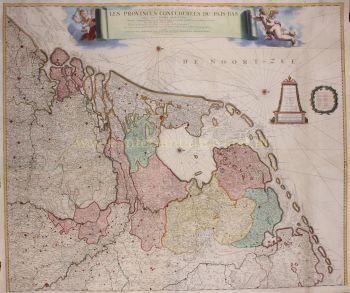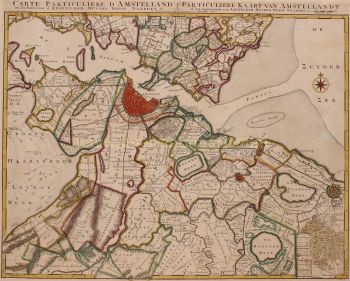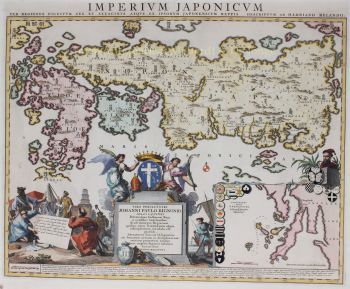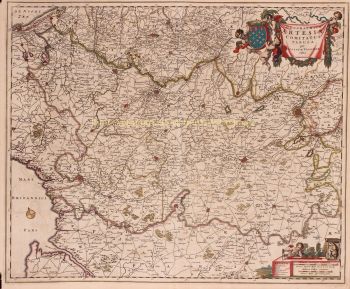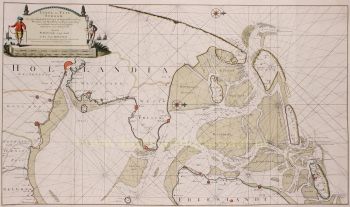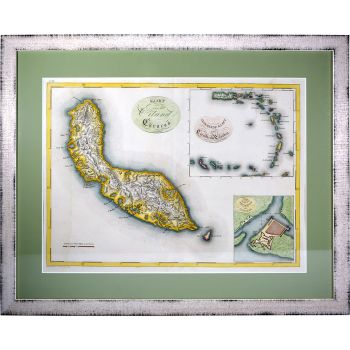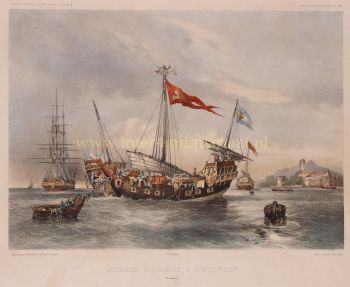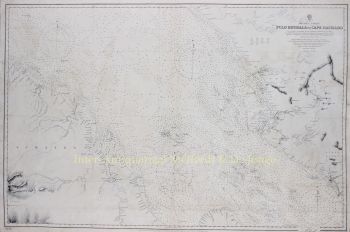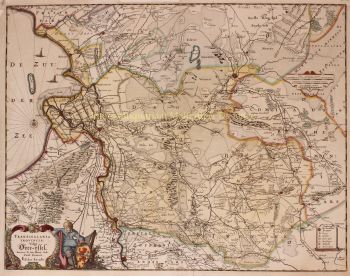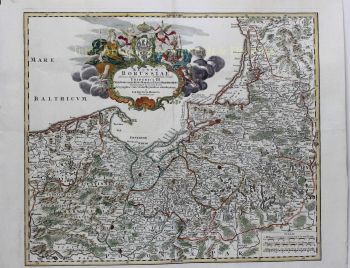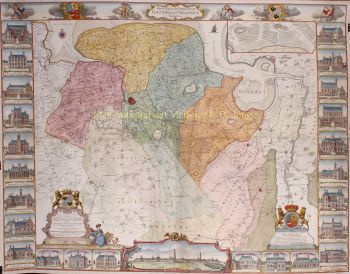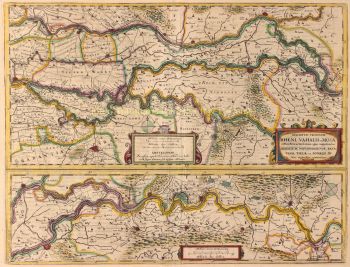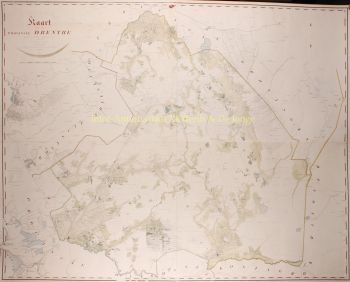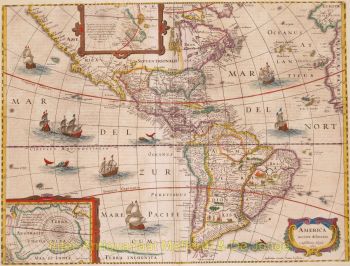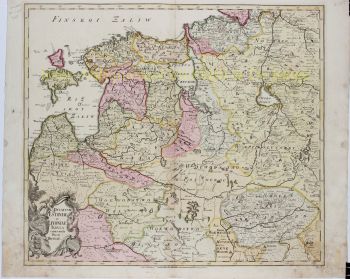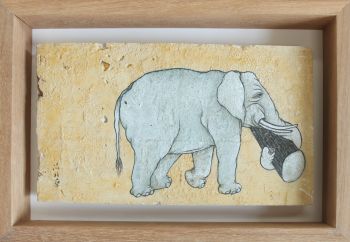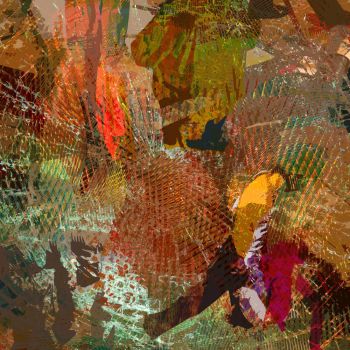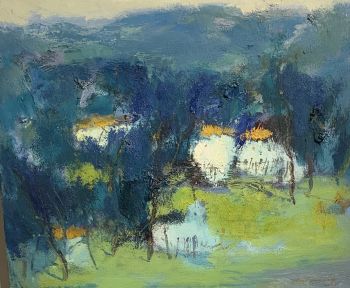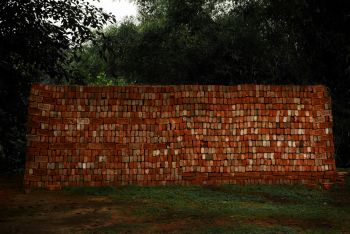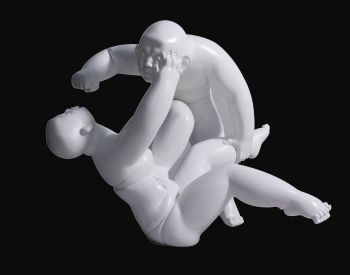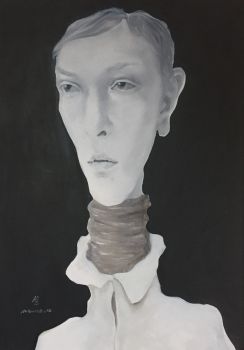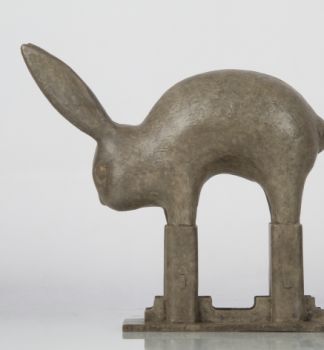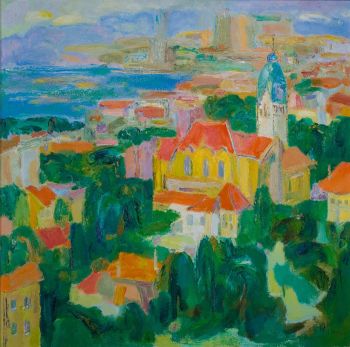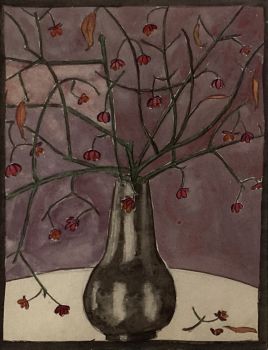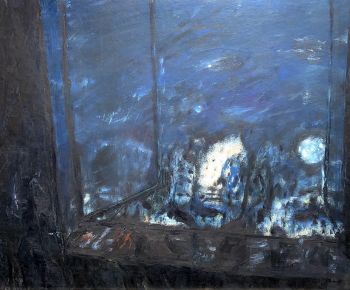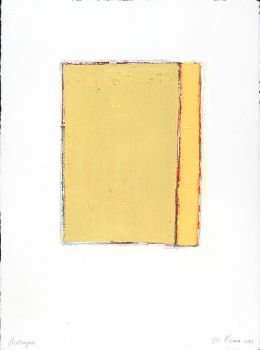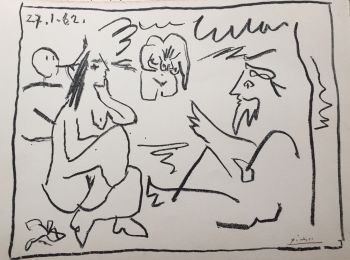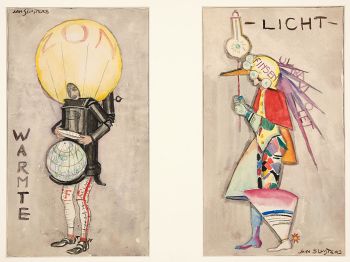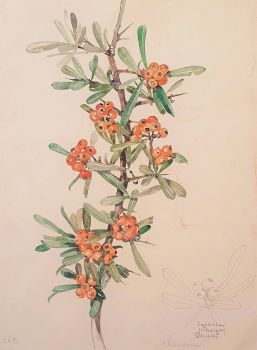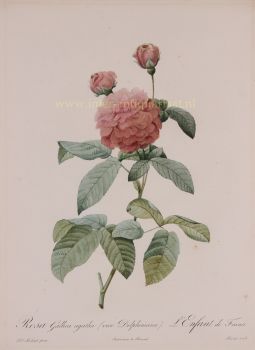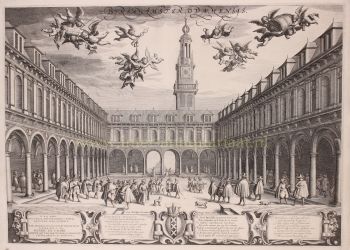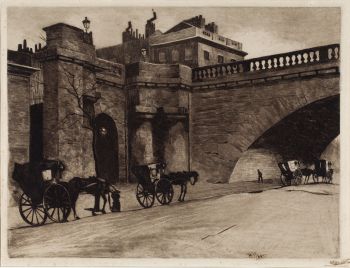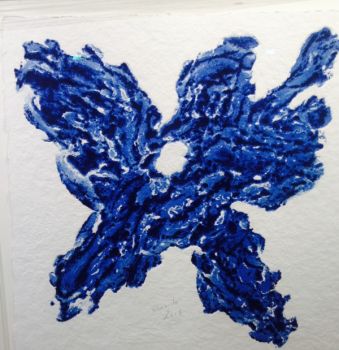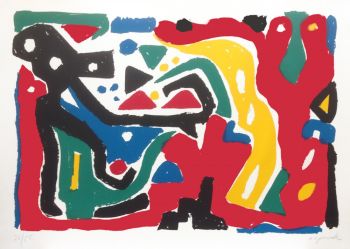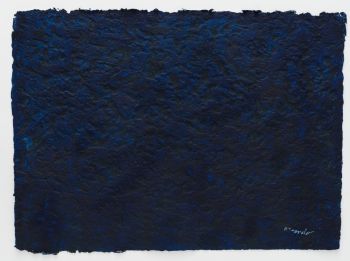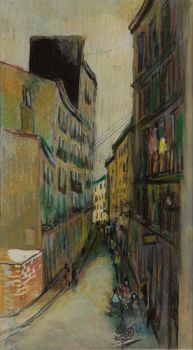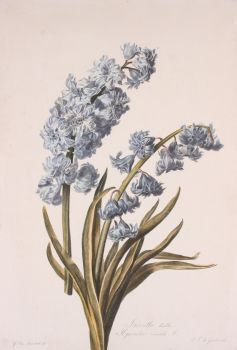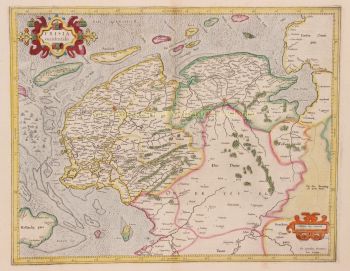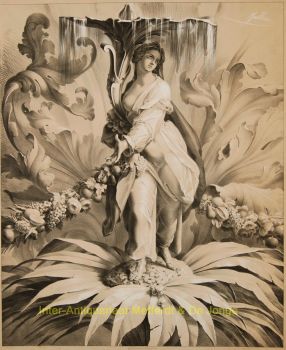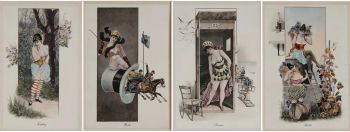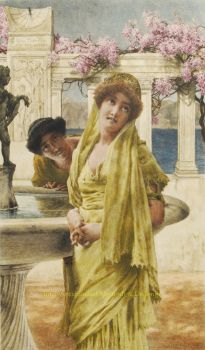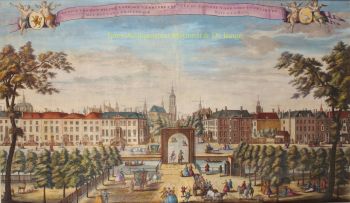China 1695
Covens and Mortier
Inter-Antiquariaat Mefferdt & De Jonge
- Sobre arte“Imperii Sinarum Nova Descriptio” [The Chinese Empire newly described]. Copper engraving published by Johannes Covens and Pieter Mortier around 1695. Verso: blank. Coloured by a later hand. Size: 46 x 59 cm. This great map of the Chinese Empire was based on the compilation of the Jesuit father Martino Martini who traveled through the region between 1643 and 1650. Martini was the Jesuit Superior in Hangchow, giving him access to indigenous and Jesuit surveys of all the regions of China. It was a period of great internal unrest and his was a perilous journey. He was able to travel inland to the Great Wall and for the first time determined with any scientific accuracy the astronomical position of many cities and topographical features. After establishing a mission in Zhejiang province he returned to Rome via Amsterdam, where he met publisher Joan Blaeu. Blaeu then prepared a group of eight maps covering China in great detail for the “Atlas Sinensis”, the first western atlas of China China is mapped with considerable accuracy for the period: the Great Wall is shown. The map incorporates the discoveries of Joao da Gama and Maarten Gerritsz de Vries. Korea for the first time on a European map is no longer depicted as an island but as a peninsula. The depiction of Japan follows a Portugese map by Christopher Blancus and Ignacio Moreira from 1617, but it is the first map to name and show Hokkaido (here “Ieso”) as an island to the north of Honshu. The map was first issued by Joan Blaeu, and then part of the plates acquired by Covens & Mortier at the end of the 17th century and re-issued with a new privilege by the Covens & Mortier firm. Price: Euro 1.450,-
- Sobre artista
Covens and Mortier (1721 - c. 1862) foi uma editora de Amsterdã, sucessora do extenso império editorial construído por Pierre Mortier (1661 - 1711).
O mapa de Covens e Mortier é frequentemente criticado como derivado - mas este não é totalmente o caso. Pierre Mortier viveu em Paris de 1681 a 1685. Lá ele estabeleceu relações estreitas com os maiores cartógrafos franceses da época, incluindo De L'Isle e D'Anville.
Seu modelo de negócios foi baseado em alavancar a tecnologia de impressão holandesa e sofisticação para co-publicar cartografia francesa de última geração. Após a morte de Mortier em 1711, sua empresa foi assumida por seu filho, Cornelius Mortier (1699 - 1783). Cornelius casou-se com a irmã de Johannes Covens (1697 - 1774) em 1721 e, em parceria com seu cunhado, fundou a firma Covens and Mortier.
Sob a marca Covens and Mortier, Cornelius e Johannes continuaram no modelo de Pierre de publicar as obras francesas mais atualizadas com permissão. Eles rapidamente se tornaram uma das maiores e mais prolíficas editoras holandesas do século XVIII.
A empresa e seus sucessores publicaram milhares de mapas ao longo de um período de 120 anos, de 1721 a meados do século XIX. Durante sua longa vida, a firma Covens and Mortier publicou como Covens and Mortier (1721 - 1778), J. Covens and Son (1778 - 94) e Mortier, Covens and Son (1794 - c. 1862).
Você está interessado em comprar esta obra de arte?
Artwork details
Related artworks
- 1 - 4 / 7
- 1 - 4 / 24
Jan Voerman sr
Still Life with flowers in a Chinese figurine1850 - 1900
Preço em pedidoKunsthandel Pygmalion
1 - 4 / 24Willem Witsen
Waiting carriages in front of Waterloo Bridge1850 - 1900
Preço em pedidoKunsthandel Pygmalion
1 - 4 / 24- 1 - 4 / 12


